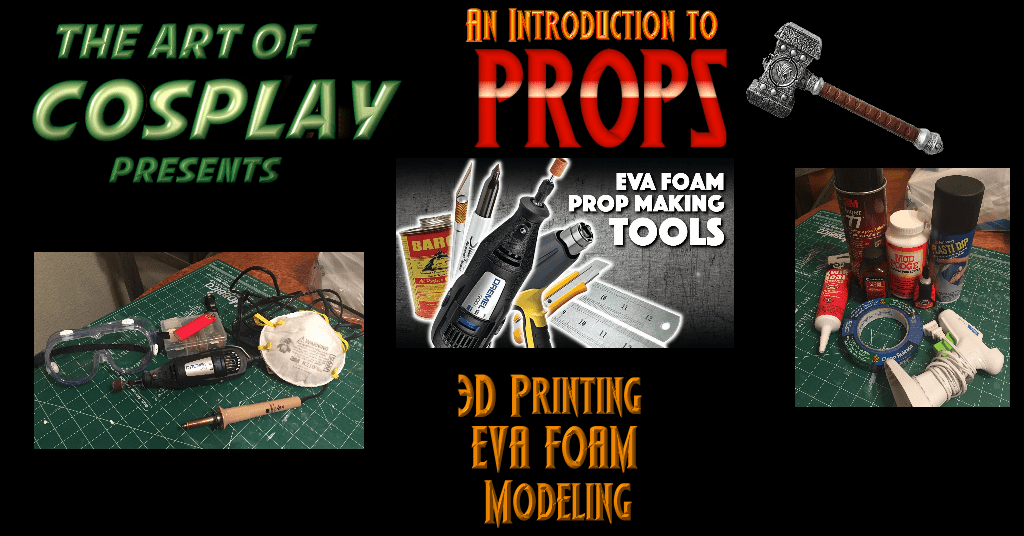As with any other type of costuming, a physical prop adds an additional level of detail to cosplay. These props vary from costume to costume, with some being as large as a handheld weapon or as small as a badge or cloak clasp. The most popular ways to construct these props are using EVA foam or producing them by 3D printing them.
Just like the larger pieces, these (sometimes) smaller pieces are often made with EVA foam. This is a type of plastic made by combining ethylene and vinyl acetate (EVA), making it soft enough to manipulate but strong enough to be durable. This foam comes in pieces as small as 0.39 inches or as thick as 3/8 of an inch. This material is also formed by using low-level heat, then sanded down and painted. Some of the thicker foam can even be carved.
The best way to make any prop is to begin with a pattern. There are many sites online where a cosplayer might find a pattern but many choose to make their own. Once the pattern is created, it can be pinned to a piece of EVA which fits the cosplayer’s specifications. For things like swords, the thicker foam is better since it offers more material for customization. By itself, the foam is still flimsy and won’t make for the idea sword or weapon. PVC piping and dowel rods are often used to provide more stability.
YouTube creator, Jax Cosplay, offers a detailed video about making an EVA foam sword.
The process of 3D printing is another avenue open to cosplayers. The specifics of the process are best left to professionals but the basic elements are the same as foam. Most all printed products begin as a pattern. Unlike the flat patterns for EVA, these 3D patterns are far more complex since they often include things like latches or fasteners. This is often the reason many beginning cosplayers choose to download a pattern rather than making it, themselves.
Unlike crafting a prop from EVA foam, elements of the printer, the materials one chooses, and the overall printing process often help to determine the quality of the final piece. Uneven printing beds can result in “dips,” areas where the final piece might dent or sag. Different printing materials can also make significant difference in how an object ends up. One of the most common materials for printing is plastic, as it is one of the most diverse. For cosplay, it is the most accepted material for props which will be brought to public conventions.
3D printing of cosplay props opens up the field to all sorts of items. The printer can make flat pieces as well as round ones. Diversity of this type allows for simple things like a sword or knife, but also complex things like a meshed handheld globe.
Careful research is recommended when looking into the world of 3D printing. In an article on the site, http://www.loveandrobots.com Michael Moore offers a more detailed breakdown on the materials used in the printing process, as well as, a few tips on getting started with the printers, themselves.
The world of cosplay is as limited as one’s imagination. As technology evolves, the world of cosplay will expand and grow richer.
